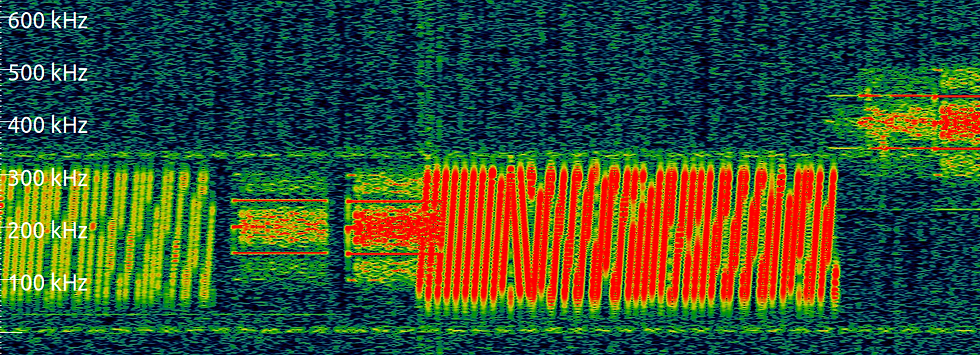Data recording in the Lenk area
- Andreas
- Feb 4, 2024
- 2 min read
Updated: Mar 11, 2024
The flying weather was good on February 3. The SDR recorder was used for the first time during test flights in the Lenk area. There were many paragliders in the sky at the same time.
In addition to the SDR recorder, our pilot also had four XC Tracer Maxx II variometers with him which were running in receive mode to decode and record the incoming FLARM and FANET packets. This should for example enable us to later get an insight under which circumstances data packets can still be decoded and when this is no longer possible.
Initial evaluations of the raw data recorded by the SDR recorder show that, as expected, the radio spectrum on the frequencies 868.2 MHz and 868.4 MHz, which are used for FLARM and FANET, is heavily utilized. The variometers of the pilots with built-in FLARM and FANET transmit short FLARM packets (approx. 5 ms) every second, primarily on 868.4 MHz, and longer FANET packets (approx. 20 ms) on 868.2 MHz.
Two examples of a FLARM packet on 868.4 MHz (top in the picture) with a simultaneously occurring FANET packet on 868.2 MHz:
The packets can be clearly distinguished from each other. FLARM packets are shorter and use a frequency shift keying (FSK) method, whereas FANET packets are longer and use the LoRa modulation type, which appears as diagonal lines in the waterfall diagram.
In the second example, three FLARM packets are effectively visible on 868.4 MHz, with the middle, strong packet overlapping the end of the first and the beginning of the third packet. In this case, a receiver would probably only be able to decode the middle of the three packets, if at all. Whether the simultaneously transmitted FANET packet on 868.2 MHz has an influence on the decodability of the FLARM packets will be investigated during a more detailed analysis of the results.
Another example, here with FLARM and FANET packets on the same frequency (868.2 MHz). The end of the second FLARM packet (third packet bottom left) is suppressed by a strong FANET packet. In addition, three FLARM packets of increasing signal strength can be seen overlapping on the right border at 868.4 MHz:
Here is another example with overlapping FLARM packets:
In the following example, a strong FLARM packet is superimposed on a weaker FANET packet:
We will evaluate this data in more detail in the coming weeks and also carry out laboratory tests to obtain information on when overlapping and neighboring packets interfere and when they do not. With these findings, we can later create simulation models for the new radio protocol and simulate and compare different algorithms and implementations.










Comments